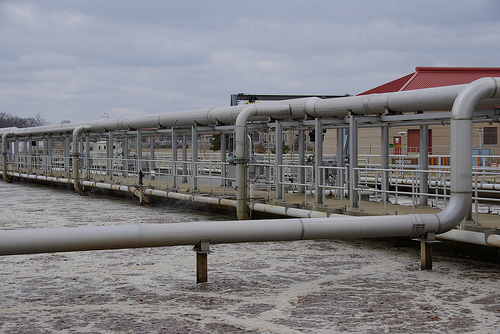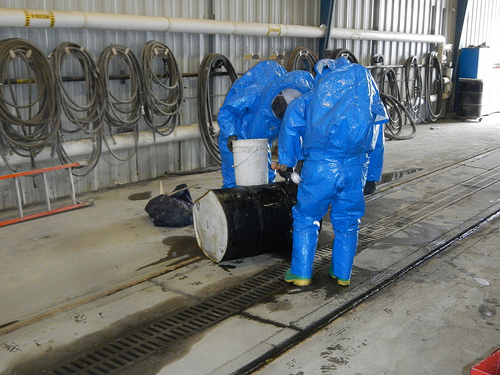The Occupational Safety and Health Administration (OSHA) adopted its Standard for Process Safety Management of Highly Hazardous Chemicals (usually referred to as “PSM”) in 1992, to require extensive risk assessment and reduction efforts by facilities where a significant chemical incident might have catastrophic consequences. OSHA has made only minor technical revisions in the ensuing two decades. However, during that time OSHA has issued a series of regulatory interpretations and enforcement guidelines that affect how the Standard is implemented.
Audit, Compliance and Risk Blog
OSHA Narrows Process Safety Management Exclusion For Retail Facilities
Posted by Jon Elliott on Tue, Aug 11, 2015
Tags: Health & Safety, Environmental risks, Environmental, Hazcom
Since it’s the middle of summer, you may have interns working in your office. If so, are they being paid for their efforts, are they receiving academic credits, or are they working to build their resumes, portfolios and connections? Some employers always pay, some never do, and some are open to negotiations based on the intern and his or her activities.
Tags: Business & Legal, Employer Best Practices, Employee Rights
Divided Supreme Court Vacates EPA Fossil Fuel Power Plants Rule
Posted by Jon Elliott on Tue, Jul 28, 2015
Late in June the U.S. Supreme Court issued its latest ruling on the Environmental Protection Agency (EPA) efforts to implement the Clean Air Act (CAA). This time a sharply divided Court voted 5 to 4 to vacate EPA’s attempt to regulate hazardous air pollutant (HAP) emissions from fossil fuel-fired electricity power plants. The justices split over when during a decade-spanning, multi-phase rulemaking did CAA require EPA to calculate the costs and benefits of regulation—the Court majority ruled that this calculation should have occurred in the first round, rejecting EPA’s decision to do so later in the rulemaking sequence.
Tags: Environmental risks, Environmental, EPA, Hazcom, Oil & Gas
Valley fever is an illness that usually affects the lungs and is caused by the microscopic fungus known as Coccidiodes immitis, which lives in the top two to twelve inches of soil. While the fungal spores may be present in soils throughout California, they are endemic in the Central Valley counties of Fresno, Kern, Kings, Madera, Merced, San Luis Obispo, and Tulare.
Tags: Employer Best Practices, Health & Safety, Employee Rights, California Legislation, Environmental risks, Environmental, EHS
It’s been more than 30 years since the U.S. Congress enacted national underground storage tank (UST) requirements (federal UST Law) in 1984. The Environmental Protection Agency (EPA) published extensive UST regulations in 1988, establishing technical requirements for the following:
Tags: Environmental risks, Environmental, EPA, Underground Storage Tanks, Hazcom
When the majority of people hear the word “violence” they think of physical assault. Of course we know that acts of violence go beyond the physical to include any act in which a person is abused, threatened, intimidated, or assaulted. Every year almost two million U.S. workers report having been victimized by acts of workplace violence, yet many cases still go unreported. Workplace violence is a much bigger problem than many people realize, and it can happen anywhere at any time, and everyone is at risk.
Tags: Business & Legal, Employer Best Practices, Health & Safety, Employee Rights, Workplace violence, criminal background checks
DHS Prepares To Expedite Approval Of Chemical Facility Site Safety Plans
Posted by Jon Elliott on Tue, Jul 14, 2015
Late in May 2015, the Department of Homeland Security (DHS) issued guidelines under which qualifying chemical facilities can apply for expedited approval of site safety plans (SSPs) intended to protect the facilities against criminal or terrorist activity. These guidelines respond to a Congressional requirement included in amendments adopted in December 2014 to DHS’ Chemical Facility Anti-terrorism Standards (CFATS) program.
Tags: Health & Safety, Environmental risks, Environmental, Hazcom
Supreme Court Expands Employers’ Duty To Avoid Religious Discrimination
Posted by Jon Elliott on Thu, Jul 09, 2015
Federal laws protect individuals against job discrimination based on a variety of “protected classes” of characteristics. Most represent physical characteristics, such as race, sex, and disability. In addition, however, Title VII of the Civil Rights Act of 1964 prohibits a prospective employer from refusing to hire an applicant in order to avoid accommodating a religious practice that it could accommodate without undue hardship.
Tags: Corporate Governance, Business & Legal, Employer Best Practices, Employee Rights, EEOC, NLRB
Management of chemicals by your organization raises a host of environmental health and safety (EH&S) issues. Some of those issues are represented by legal and regulatory compliance requirements, others by formal but non-binding programs that range from company policies to ISO certifications. In response, organizations adopt and implement a wide variety of EH&S programs, including very broad ones (e.g., compliance with the Hazard Communication Standard) as well as very narrow ones (e.g., programs for managing entry into Confined Spaces). Organizations with sufficient resources and the will to organize themselves will create systematic programs to evaluate EH&S issues to ensure they’re addressed, and to design and coordinate programs in ways that do so effectively and efficiently. (In 2013-2014 I prepared a series of e-books that outlined EH&S regulatory requirements triggered by chemicals - click here to download).
Tags: Audit Standards, Health & Safety, OSHA, Environmental risks, Environmental, EHS, Hazcom
Did you know that “what you drive, how you drive, and what fuel you use can impact both the environment and your pocketbook?” The U.S. Environmental Protection Agency (EPA) has put together a Green Vehicle Guide website that provides useful information and answers to all your questions about how you can go green on the road and save money too.
Tags: Health & Safety, California Legislation, Training, Environmental risks, Environmental, EPA, Hazcom, Transportation










